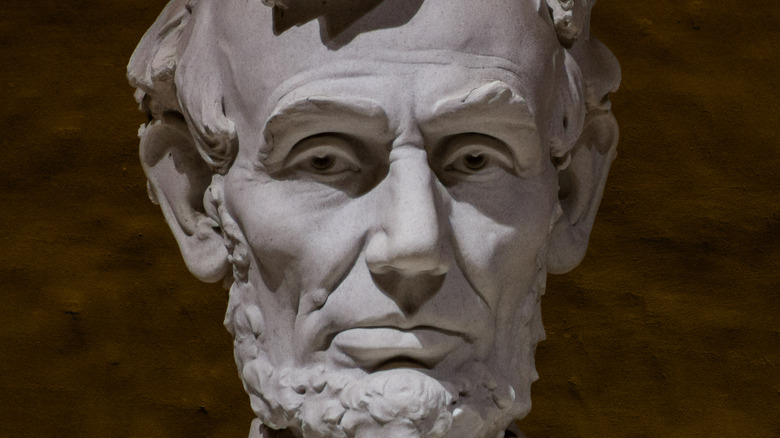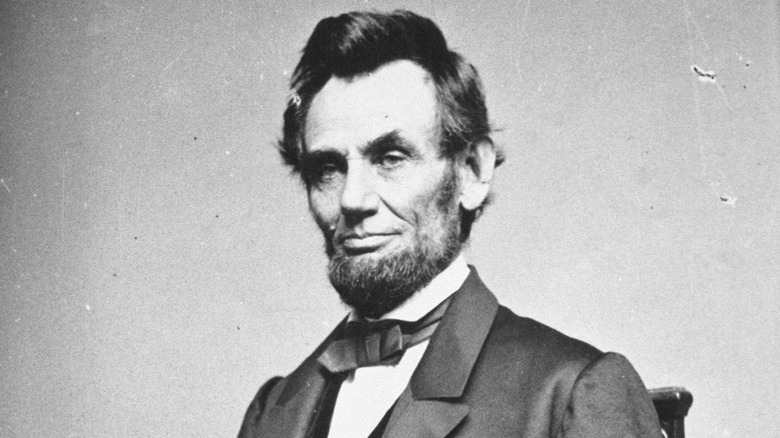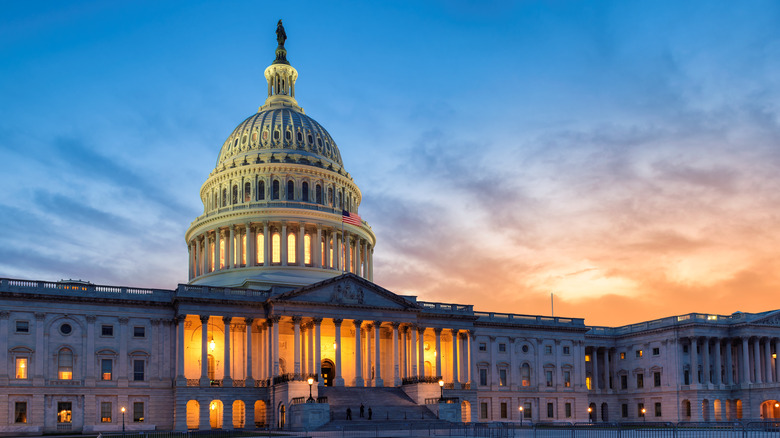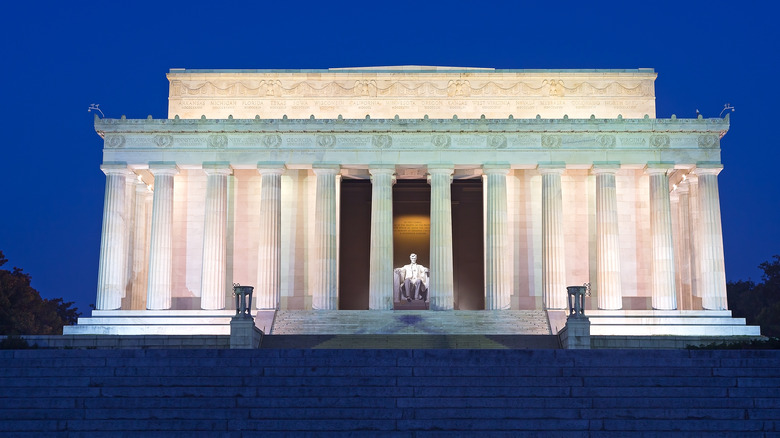Why Did The Lincoln Memorial Take 60 Years To Go Up After His Death?
The Lincoln Memorial stands on the National Mall in Washington, D.C., and thousands of people visit this site each year. But this tribute to President Abraham Lincoln, who was assassinated in 1865, wasn't always this popular. This monument ran into several obstacles before construction even began, according to the Washington Post. Like many public projects, the memorial became mired in a political struggle.
The first effort to create a memorial to Lincoln came only two years after his death, per the National Park Service. In 1867, Congress approved the formation of the Lincoln Monument Association. The organization brought sculptor Clark Mills on board to create a special monument that was to stand on the Capitol grounds. The well-known artist designed an elaborate, multi-tiered structure that used 36 bronze figures in scenes depicting justice, war, and liberty. The project's crowning glory was a sculpture of Lincoln working on the Emancipation Proclamation at its top (via Histories of the National Mall).
Fundraising problems stopped the first Lincoln tribute
The Lincoln Monument Association tried to raise the funds for the monument to the late president. Unfortunately, the organization wasn't able to get enough money together to build the structure (via the National Park Service). The project may have suffered from a bit of poor timing, as the government was more focused on bringing the country back together after the end of the Civil War. It would be decades before the idea of a Lincoln memorial could gain enough political traction to be brought up again.
In 1901, the Senate Park Commission revisited the idea of a Lincoln memorial as it looked at reworking the National Mall, per the Washington Post. The commission had an array of creative talent on board, including sculptor Augustus St. Gaudens, landscape designer Frederick Law Olmstead, Jr., and architect Charles McKim (via NPS). The commission developed a plan, published in 1902, that called for the Lincoln Memorial to be placed alongside the Potomac River as part of an expanded National Mall.
Political opposition nearly derailed the Lincoln Memorial
Not everyone was on board with the Senate Park Commission's ideas about the Lincoln Memorial. One politician in particular sought to block its construction. According to the Washington Post, Joe Cannon, a Republican senator from Illinois, led the charge against the memorial for a variety of reasons. He balked at the $2 million price tag for the project, and he strongly objected to its location. Cannon once said, "So long as I live, I'll never let a memorial to Abraham Lincoln be erected in that goddamned swamp."
Cannon tried to take the National Mall site out of contention by getting something else built there. But President Theodore Roosevelt intervened to put a stop to that effort. Some wondered whether something more practical would be a better tribute to Lincoln, and they began campaigning for a memorial highway in the slain president's honor. Cannon and others eventually supported the idea of the memorial, but they fought for it to be placed in a more central location near the Union Station. The creation of the U.S. Commission of Fine Arts in 1910 was intended to help resolve the Lincoln memorial issue as part of its review of all the monuments on public sites found in the Washington, D.C. area, per the NPS.
Work on the Lincoln Memorial finally began in 1914
It took one more congressional committee to help make the Lincoln Memorial a reality. In 1911, the Lincoln Memorial Commission was formed and its goal was to determine the placement and design for the memorial (via the NPS). Senator Cannon was a member of the commission and sought to place it at Arlington National Cemetery and several other sites, according to the Washington Post. But Cannon was eventually overruled, and the Lincoln Memorial at its present-day site was finally approved in 1912.
Architect Henry Bacon drew inspiration for the Lincoln Memorial design from the Parthenon in Greece, per Britannica. Digging for the foundation began in 1914 and the foundation was completed the following year (via the NPS). Work continued steadily until 1917, when the United States entered into World War I. The official dedication of the Lincoln Memorial took place on May 30, 1922, in front of a crowd of more than 50,000 people. The attendees included Robert Todd Lincoln, the late president's son. Both President Warren G. Harding, the country's current leader, and President Howard Taft, the former president who later became the chief justice of the Supreme Court, were among the speakers at this special event.



